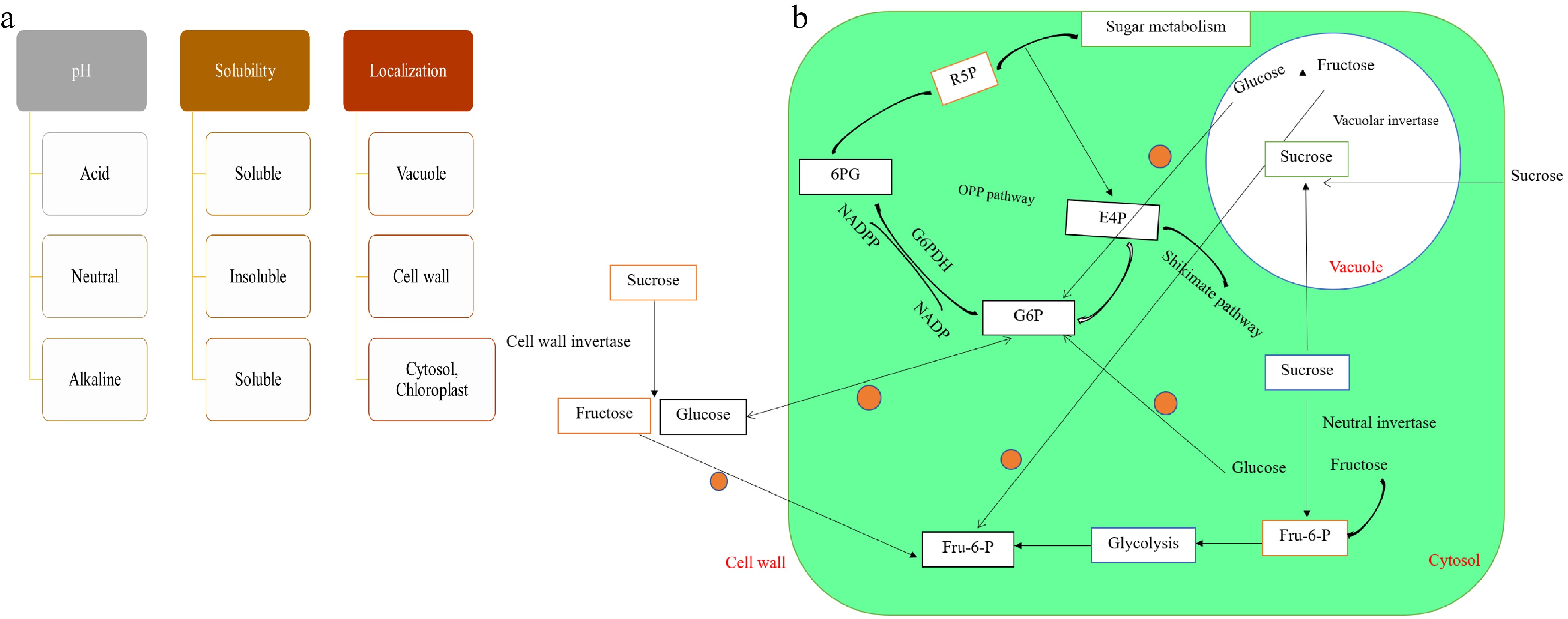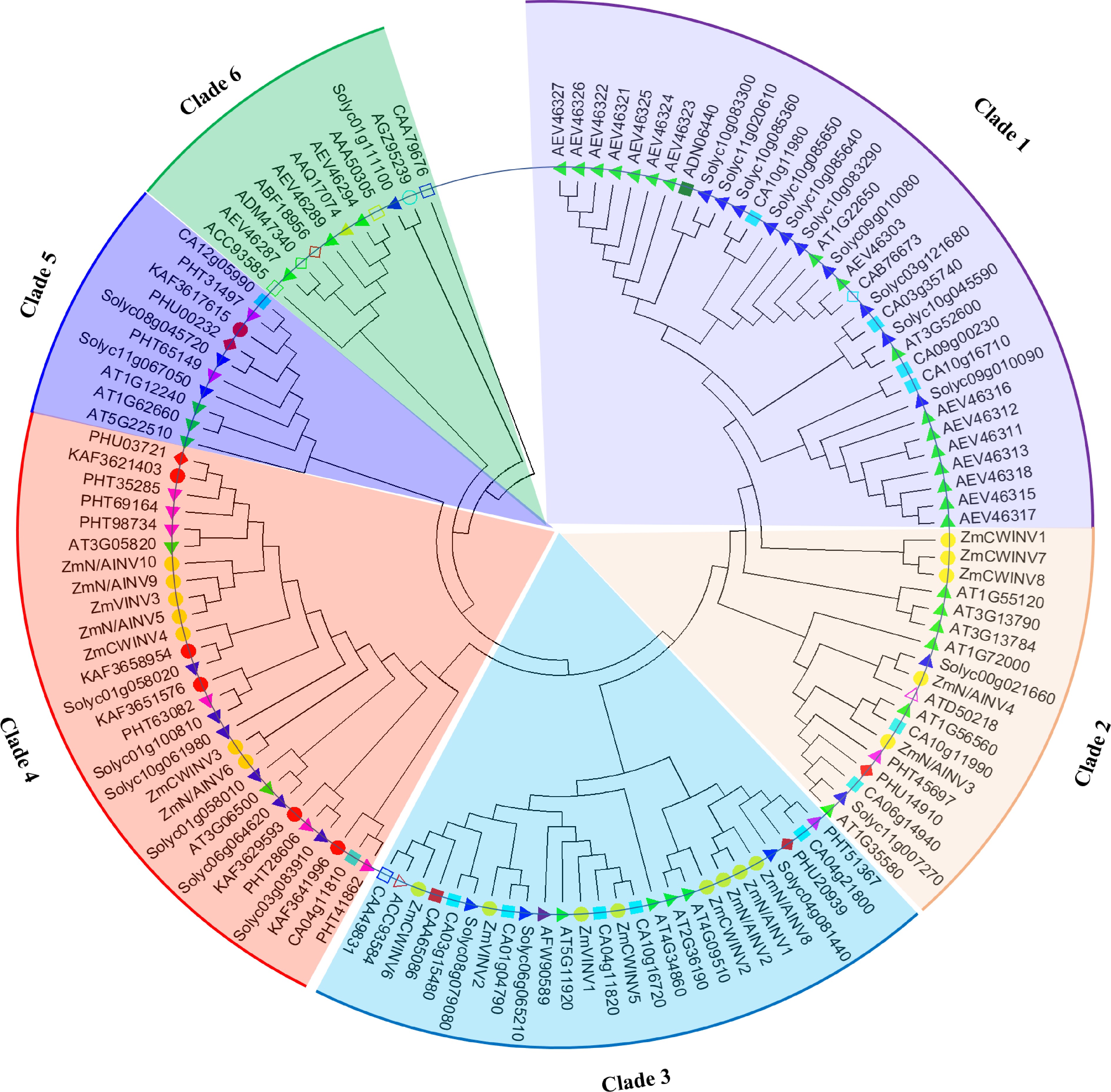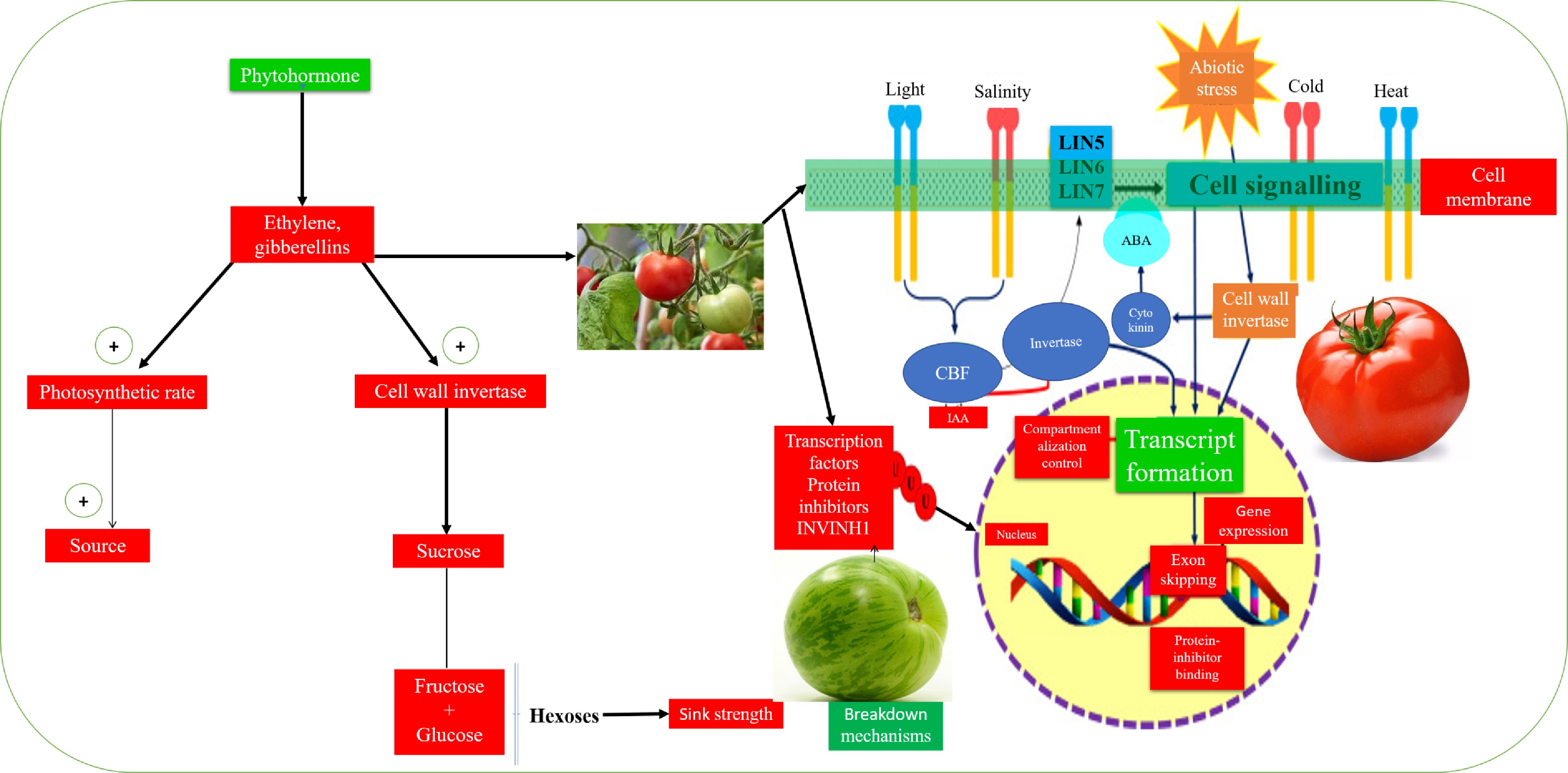-

Figure 1. Invertase catalyzes the pivotal step in sugar metabolism. Sucrose unloading in tomato fruit is squarely a controlled process. The sucrose and hexose transporters modulate synthesis, loading, unloading, membrane transport, metabolic conversion, and compartmentalization of translocated sugars and sucrose. Sucrose is degraded in vacuole by invertase and re-synthesized in the cytosol catalyzed by sucrose synthase. The final stage encompasses sucrose degradation in the apoplast by invertase following sucrose synthesis in the cytosol and subsequently catalyzed by the sucrose synthase, UDP, Uridine diphosphate. Phosphoglucomutase (EC 5.4.2.2), also written as PGM is an enzyme that transfers a phosphate group on a -D-glucose monomer from position 1 to position 6 in the forward direction, or from position 6 to position 1 in the reverse direction. More specifically, it aids in the conversion of glucose 1-phosphate into glucose 6-phosphate. Phosphoglucose isomerase (PGI; EC 5.3. 1.9) is a cytosolic glycolytic enzyme that catalyzes the reversible isomerization of D-glucose 6-phosphate (G6P) to D-fructose 6-phosphate (F6P).
-

Figure 2. (a) Classification of invertase based on pH, solubility, and subcellular localization. (b) Functions of invertase, role in sucrose metabolism and their biosynthetic pathways in tomato. The mitochondrial NADPH pool is maintained by oxidative pentose phosphate pathway (OPP pathway) and glucose supply when mitochondria are subjected to oxidative stress. Glucose 6-phosphate (P6G) is a glucose molecule that has its hydroxyl group on carbon 6 phosphorylated. Due to the fact that the vast majority of glucose that enters a cell gets phosphorylated in this manner, this dianion is quite frequent in cells. The pentose phosphate route produces ribose 5-phosphate (R5P), which is also used as an intermediary. The formation of ribulose 5-phosphate is the final stage in the oxidative processes in the pentose phosphate pathway. Adapted from Chibbar[44], Huang et al.[10], Fotopoulos[57], Roitsch and González[93], Tauzin and Giardina[66].
-

Figure 3. Evolutionary divergence and relationships of tomato invertase genes within plant species. Arabidopsis thaliana (AT), Solanum lycopersicum (Sl or sol), Pepper (CA), Zea mays (Zm), Solanum tuberosum (AE), Potato (AA, PHU or PHT).
-

Figure 4. Key stress-induced invertase regulatory mechanisms in tomato fruit development. High invertase activity increases sucrose imports into young tomato fruits. Sugar signaling regulates high sucrose import pathways and cell wall. Phytohormones, protein inhibitors, and other abiotic stressors influence invertase regulatory mechanisms. Prime invertase regulatory mechanisms under stress conditions range from differential transcript formation[43,71,74], exon-skipping[67,93,131], protein-inhibitor binding[85,93,132], compartmentalization-control and breakdown mechanisms[10].
-
Invertase/sucrose Role Source Cell wall invertase Modulates tomato fruit flavor [8, 62, 63] Adjusts sucrose allotment between source and sink organs [31, 64] Enhances plant response to stress/signal transduction [57, 65−67] Modulates total soluble solid content in mature fruits [10, 68, 69] Regulates cell differentiation and fruit development [44] Sustains the apoplastic glucose and fructose content at an optimum level [43, 70] Vacuolar invertase Influences fruits sugar composition and storage organs [10, 44, 71, 72] Regulates plant response to osmotic stress [73] Modulates tomato response to cold stress [74, 75] Cytoplasmic invertase Adjusts sucrose metabolism in tomato [74−76] Regulates biosynthesis of volatiles in matured fruits [25, 77, 78] Modulates sugar gene expression in matured fruits [71] Sucrose synthase Adjusts sucrose partitioning between source and sink organs [35, 48, 67, 68, 79] Regulates sucrose metabolism in matured fruits [41] Enhances tomato response to cold stress [66] Modulates tomato fruit flavor [29, 31, 62, 80] Table 1. Major roles of different invertases and sucrose synthase in tomato.
Figures
(4)
Tables
(1)